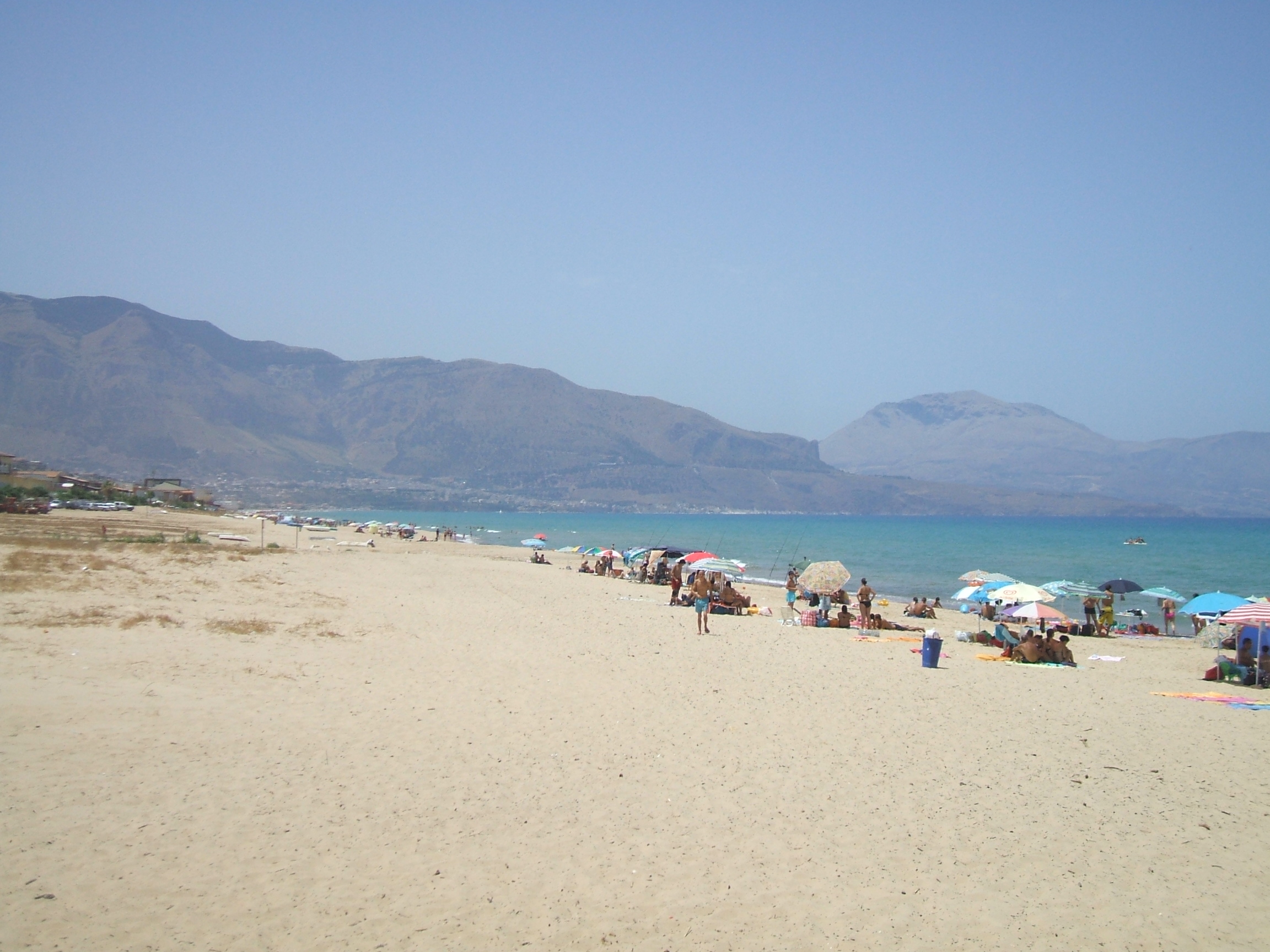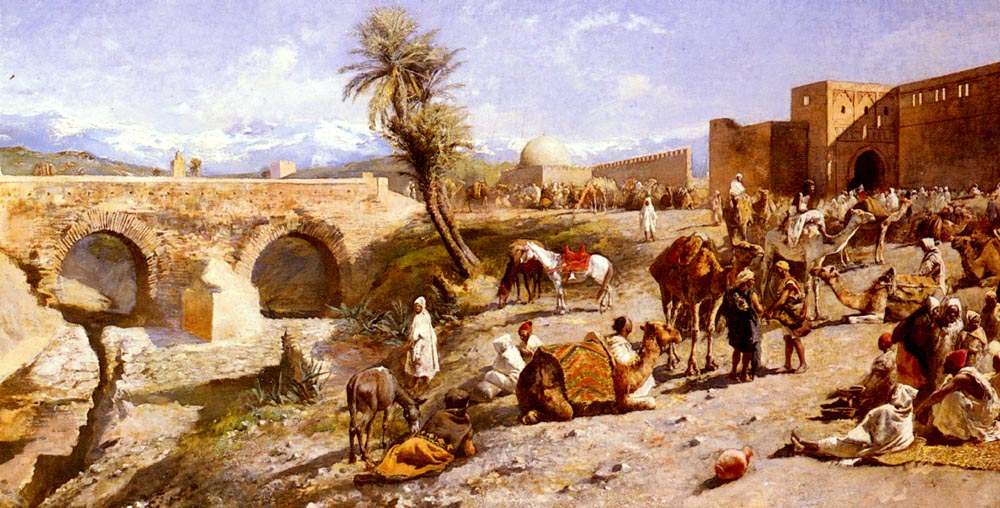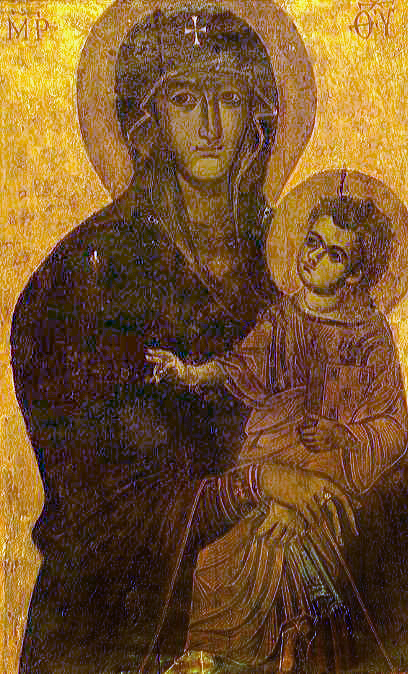|
Church Of Santa Maria Delle Grazie (Alcamo)
Santa Maria delle Grazie is a Catholic church located in Alcamo, in the province of Trapani. History Initially it was a small chapel built in the 17th century; in 1619 they put an image that Pietro Maria Rocca, a scholar from Alcamo, thought it was the triptych realized in 1462 on a board, and moved to the National Museum of Palermo in 1865.Carlo Cataldo, Guida storico-artistica dei beni culturali di Alcamo-Calatafimi-Castellammare del Golfo p.83-84, Alcamo, Sarograf, 1982. The chapel was enlarged between the years 1626 and 1636, after an event happened on 21 June 1625: miraculously in front of it, the cart carrying the Plague (disease), plague victims to the cemetery of Saint Ippolito broke irremediably, the sign that plague had finished. Description and works The façade was carved by Domenico Marchese in 1627. The church was then restored in 1898, and in 1914 it was frescoed by Liborio Mirabile, a painter from Alcamo. A sculptor from Palermo, Paolo La Licata, realize ... [...More Info...] [...Related Items...] OR: [Wikipedia] [Google] [Baidu] |
Alcamo
Alcamo (; scn, Àrcamu, italic=no) is the fourth-largest town and commune of the Province of Trapani, Sicily, with a population of 44.925 inhabitants. It is on the borderline with the Metropolitan City of Palermo at a distance of about 50 kilometres from Palermo and Trapani. Nowadays the town territory includes an area of 130,79 square kilometres and is the second municipality as for population density in the province of Trapani, after Erice. Alcamo is bounded by the Tyrrhenian Sea on the north, Balestrate and Partinico on the east, Camporeale on the south and Calatafimi-Segesta and Castellammare del Golfo on the west. Its most important hamlet is Alcamo Marina at about 6 kilometres from the town centre. Together with other municipalities it takes part in the ''Associazione Città del Vino'', the movement ''Patto dei Sindaci'', ''Progetto Città dei Bambini'', ''Rete dei Comuni Solidali'' and ''Patto Territoriale Golfo di Castellammare''. Geography Territory Alcamo is ... [...More Info...] [...Related Items...] OR: [Wikipedia] [Google] [Baidu] |
Priest
A priest is a religious leader authorized to perform the sacred rituals of a religion, especially as a mediatory agent between humans and one or more deities. They also have the authority or power to administer religious rites; in particular, rites of sacrifice to, and propitiation of, a deity or deities. Their office or position is the 'priesthood', a term which also may apply to such persons collectively. A priest may have the duty to hear confessions periodically, give marriage counseling, provide prenuptial counseling, give spiritual direction, teach catechism, or visit those confined indoors, such as the sick in hospitals and nursing homes. Description According to the trifunctional hypothesis of prehistoric Proto-Indo-European society, priests have existed since the earliest of times and in the simplest societies, most likely as a result of agricultural surplus and consequent social stratification. The necessity to read sacred texts and keep temple or church rec ... [...More Info...] [...Related Items...] OR: [Wikipedia] [Google] [Baidu] |
Salesian
, image = File:Stemma big.png , image_size = 150px , caption = Coat of arms , abbreviation = SDB , formation = , founder = John Bosco , founding_location = Valdocco, Turin , type = Clerical Religious Congregation of Pontifical Right , headquarters = Rome, Italy , purpose = , membership = 14,614 (128 bishops, 14,056 priests and 430 novices) , membership_year = 2022 , leader_title = Rector Major of the Salesians , leader_name = Ángel Fernández Artime, SDB , leader_title2 = Vicar of the Rector Major , leader_name2 = Francesco Cereda, SDB , website = , nickname = Salesians of Don Bosco The Salesians of Don Bosco (SDB), formally known as the Society of Saint Francis de Sales (), is a religious congregation of men in the Catholic Church, founded in the late 19th century by Italian priest Saint John Bo ... [...More Info...] [...Related Items...] OR: [Wikipedia] [Google] [Baidu] |
Procession
A procession is an organized body of people walking in a formal or ceremonial manner. History Processions have in all peoples and at all times been a natural form of public celebration, as forming an orderly and impressive ceremony. Religious and triumphal processions are abundantly illustrated by ancient monuments, e.g. the religious processions of Egypt, those illustrated by the rock-carvings of Boghaz-Keui, the many representations of processions in Greek art, culminating in the great Panathenaic procession of the Parthenon Frieze, and Roman triumphal reliefs, such as those of the arch of Titus. Greco-Roman practice Processions played a prominent part in the great festivals of Greece, where they were always religious in character. The games were either opened or accompanied by more or less elaborate processions and sacrifices, while processions from the earliest times formed part of the worship of the old nature gods, as those connected with the cult of Dionysus and the Ph ... [...More Info...] [...Related Items...] OR: [Wikipedia] [Google] [Baidu] |
Simulacrum
A simulacrum (plural: simulacra or simulacrums, from Latin '' simulacrum'', which means "likeness, semblance") is a representation or imitation of a person or thing. The word was first recorded in the English language in the late 16th century, used to describe a representation, such as a statue or a painting, especially of a god. By the late 19th century, it had gathered a secondary association of inferiority: an image without the substance or qualities of the original. Literary critic Fredric Jameson offers photorealism as an example of artistic simulacrum, in which a painting is created by copying a photograph that is itself a copy of the real thing.Massumi, Brian"Realer than Real: The Simulacrum According to Deleuze and Guattari." retrieved 2 May 2007 Other art forms that play with simulacra include trompe-l'œil, pop art, Italian neorealism, and French New Wave. Philosophy Simulacra have long been of interest to philosophers. In his ''Sophist'', Plato speaks of two kinds ... [...More Info...] [...Related Items...] OR: [Wikipedia] [Google] [Baidu] |
Triduum
A triduum (plural: ''tridua'') is a religious observance lasting three days. Major tridua The best-known and most significant example today is the liturgical Paschal Triduum (the three days from the evening of Maundy Thursday to Easter Sunday). Other liturgical tridua celebrated in Western Christianity include the Rogation Days preceding Ascension Thursday, the feasts of Christmas and Pentecost together with the first two days of their octave, and Allhallowtide that lasts from Halloween to All Souls Day. In Eastern Christianity (both Orthodox and Catholic) the analogues of festive tridua take the form of a major feasts followed by an associated Synaxis. The most publicly celebrated examples are the feast of Epiphany together with its eve and the following day dedicated to Saint John the Baptist, and the Nativity feast with Christmas Eve and the Synaxis of Theotokos. Ecclesiastical approval has been granted for tridua in honour of the Trinity, the Eucharist and Saint Joseph ... [...More Info...] [...Related Items...] OR: [Wikipedia] [Google] [Baidu] |
Child Jesus
The Christ Child, also known as Divine Infant, Baby Jesus, Infant Jesus, the Divine Child, Child Jesus, the Holy Child, Santo Niño, and to some as Señor Noemi refers to Jesus Christ from his nativity to age 12. The four canonical gospels, accepted by most Christians today, lack any narration of the years between Jesus' infancy and the Finding in the Temple when he was 12. Liturgical feasts Liturgical feasts relating to Christ's infancy and childhood include: * The Feast of the Nativity of Jesus Christ (25 December); * The Feast of the Circumcision of Christ (1 January – Eastern Orthodox Church, Latin Rite-Extraordinary Form); * The Feast of the Holy Name of Jesus (3 January – Latin Rite; others – various); * The Feast of the Epiphany (6 January or 19 January in the Gregorian equivalent of the Julian calendar) * The Feast of the Presentation of the Lord (2 February) Depictions in art From about the third or fourth century onwards, the child Jesus is frequently show ... [...More Info...] [...Related Items...] OR: [Wikipedia] [Google] [Baidu] |
Sacrilege
Sacrilege is the violation or injurious treatment of a sacred object, site or person. This can take the form of irreverence to sacred persons, places, and things. When the sacrilegious offence is verbal, it is called blasphemy, and when physical, it is often called desecration. In a less proper sense, any transgression against what is seen as the virtue of religion would be a sacrilege, and so is coming near a sacred site without permission. Most ancient religions have a concept analogous to sacrilege, often considered as a type of taboo. The basic idea is that realm of sacrum or haram stands above the world of profanum and its instantiations, see the Sacred–profane dichotomy. Etymology The term "sacrilege" originates from the Latin ''sacer'', meaning sacred, and ''legere'', meaning to steal. In Roman times, it referred to the plundering of temples and graves. By the time of Cicero, sacrilege had adopted a more expansive meaning, including verbal offences against religion an ... [...More Info...] [...Related Items...] OR: [Wikipedia] [Google] [Baidu] |
The Virgin And Child
In art, a Madonna () is a representation of Mary, either alone or with her child Jesus. These images are central icons for both the Catholic and Orthodox churches. The word is (archaic). The Madonna and Child type is very prevalent in Christian iconography, divided into many traditional subtypes especially in Eastern Orthodox iconography, often known after the location of a notable icon of the type, such as the '' Theotokos of Vladimir'', ''Agiosoritissa'', '' Blachernitissa'', etc., or descriptive of the depicted posture, as in '' Hodegetria'', ''Eleusa'', etc. The term ''Madonna'' in the sense of "picture or statue of the Virgin Mary" enters English usage in the 17th century, primarily in reference to works of the Italian Renaissance. In an Eastern Orthodox context, such images are typically known as ''Theotokos''. "Madonna" may be generally used of representations of Mary, with or without the infant Jesus, is the focus and central figure of the image, possibly ... [...More Info...] [...Related Items...] OR: [Wikipedia] [Google] [Baidu] |
Wayside Shrine
A wayside shrine is a religious image, usually in some sort of small shelter, placed by a road or pathway, sometimes in a settlement or at a crossroads, but often in the middle of an empty stretch of country road, or at the top of a hill or mountain. They have been a feature of many cultures, including Chinese folk religious communities, Catholic and Orthodox Europe and some Asian regions. The origins of wayside shrines Wayside shrines were often erected to honor the memory of the victim of an accident, which explains their prevalence near roads and paths; in Carinthia, for example, they often stand at crossroads. Some commemorate a specific incident near the place; either a death in an accident or escape from harm. Other icons commemorate the victims of the plague. The very grand medieval English Eleanor crosses were erected by her husband to commemorate the nightly resting places of the journey made by the body of Queen Eleanor of Castile as it returned to London in the 12 ... [...More Info...] [...Related Items...] OR: [Wikipedia] [Google] [Baidu] |
Saint Lucy
Lucia of Syracuse (283–304), also called Saint Lucia ( la, Sancta Lucia) better known as Saint Lucy, was a Roman Christian martyr who died during the Diocletianic Persecution. She is venerated as a saint in the Catholic, Anglican, Lutheran, and Eastern Orthodox churches. She is one of eight women (including the Virgin Mary) explicitly commemorated by Catholics in the Canon of the Mass. Her traditional feast day, known in Europe as Saint Lucy's Day, is observed by Western Christians on 13 December. Lucia of Syracuse was honored in the Middle Ages and remained a well-known saint in early modern England. She is one of the best known virgin martyrs, along with Agatha of Sicily, Agnes of Rome, Cecilia of Rome and Catherine of Alexandria. Sources The oldest record of her story comes from the fifth-century ''Acts of the Martyrs''. The single fact upon which various accounts agree is that a disappointed suitor accused Lucy of being a Christian, and she was executed in Syracuse, ... [...More Info...] [...Related Items...] OR: [Wikipedia] [Google] [Baidu] |
Saint Joseph
Joseph (; el, Ἰωσήφ, translit=Ioséph) was a 1st-century Jewish man of Nazareth who, according to the canonical Gospels, was married to Mary, the mother of Jesus, and was the legal father of Jesus. The Gospels also name some brothers of Jesus who may have been: (1) the sons of Mary, the mother of Jesus, and Joseph; (2) sons of Mary, the wife of Clopas and sister of Mary the mother of Jesus; or (3) sons of Joseph by a former marriage. Joseph is venerated as Saint Joseph in the Catholic Church, Orthodox Church, Oriental Orthodox Church and Anglicanism. His feast day is observed by some Lutherans. In Catholic traditions, Joseph is regarded as the patron saint of workers and is associated with various feast days. The month of March is dedicated to Saint Joseph. Pope Pius IX declared him to be both the patron and the protector of the Catholic Church, in addition to his patronages of the sick and of a happy death, due to the belief that he died in the presence of Jesus and ... [...More Info...] [...Related Items...] OR: [Wikipedia] [Google] [Baidu] |




.jpg)



